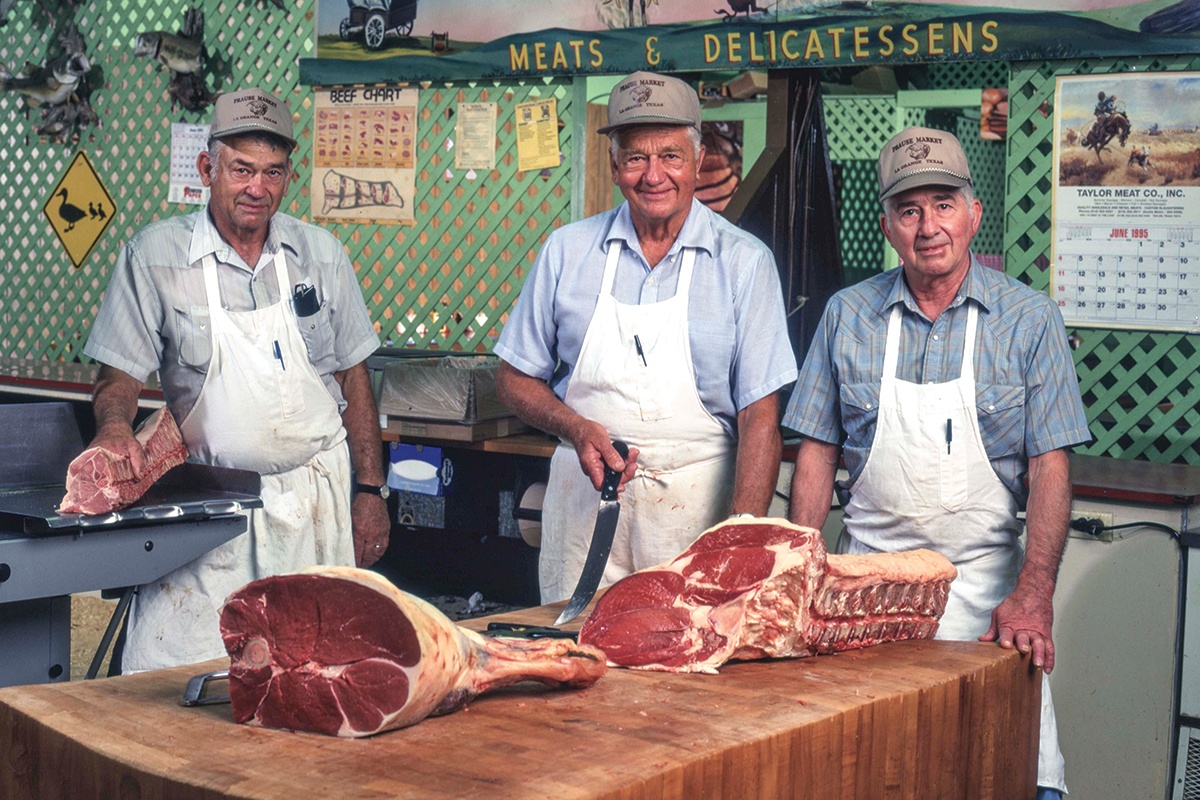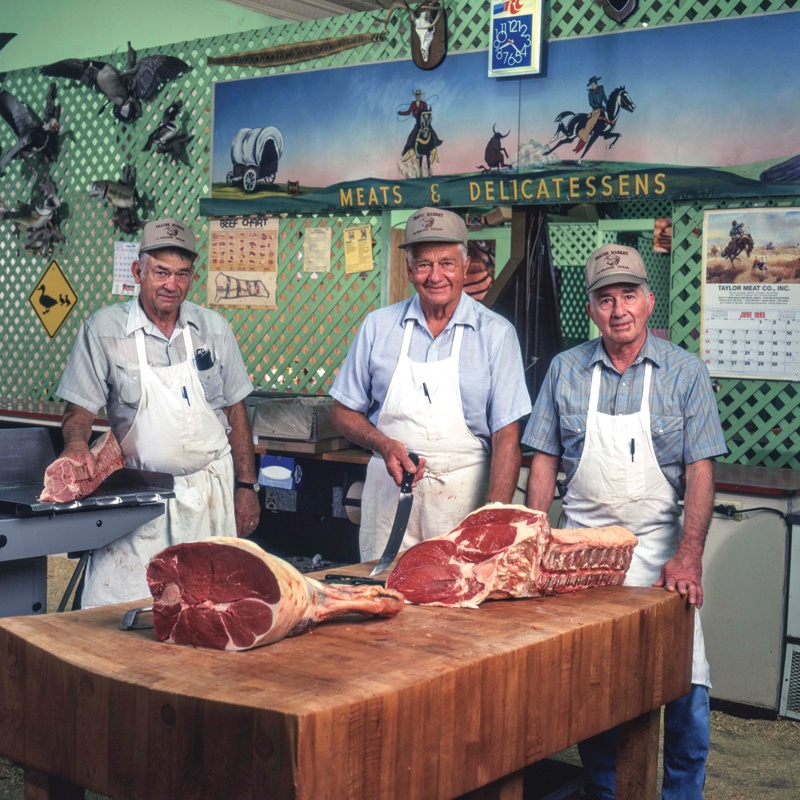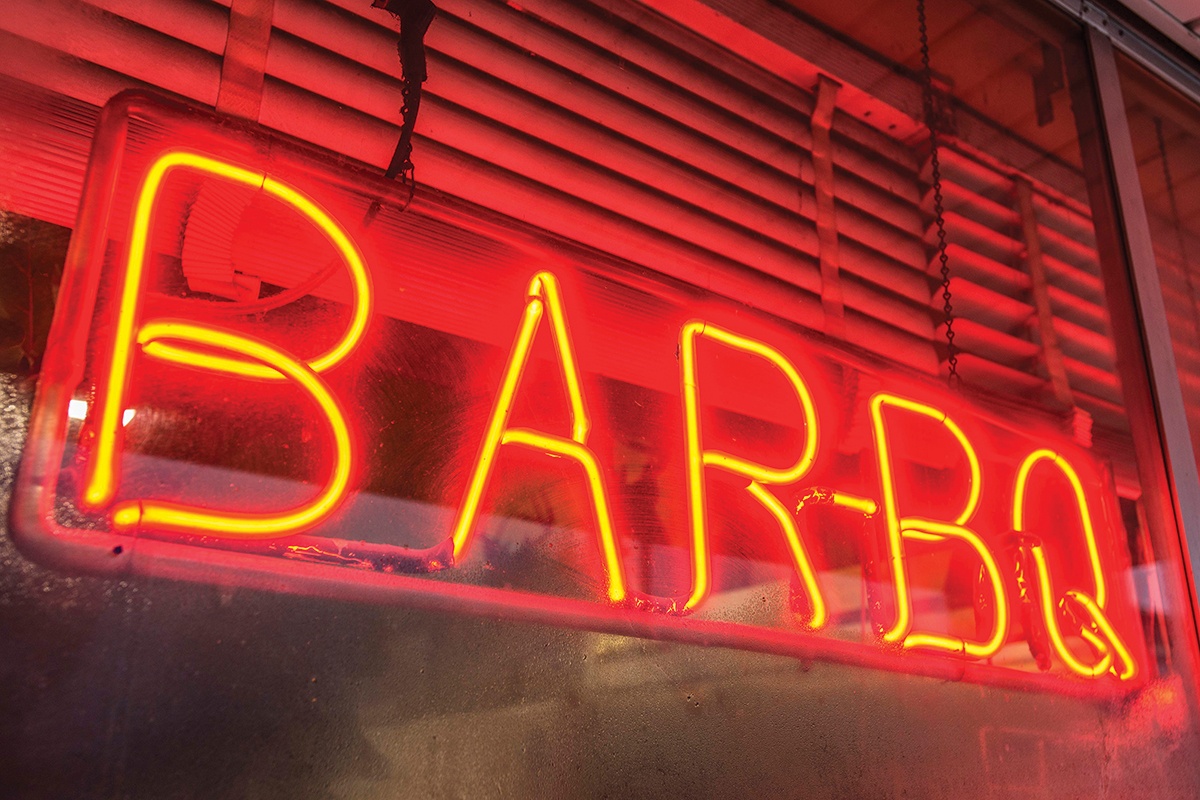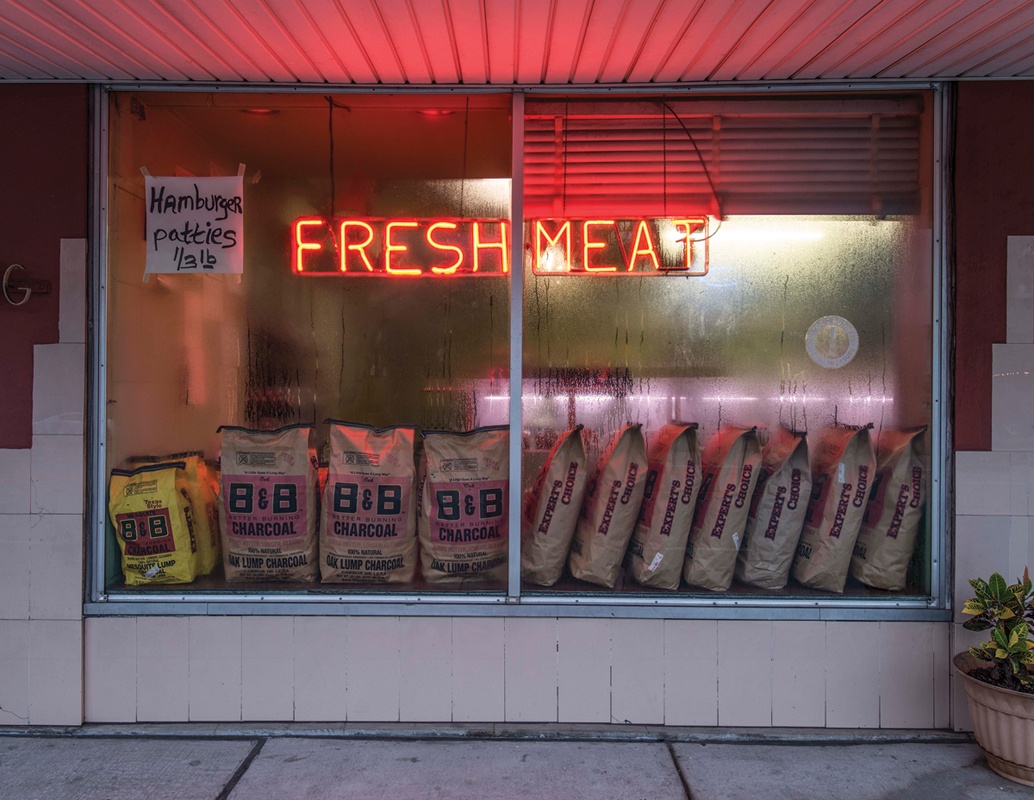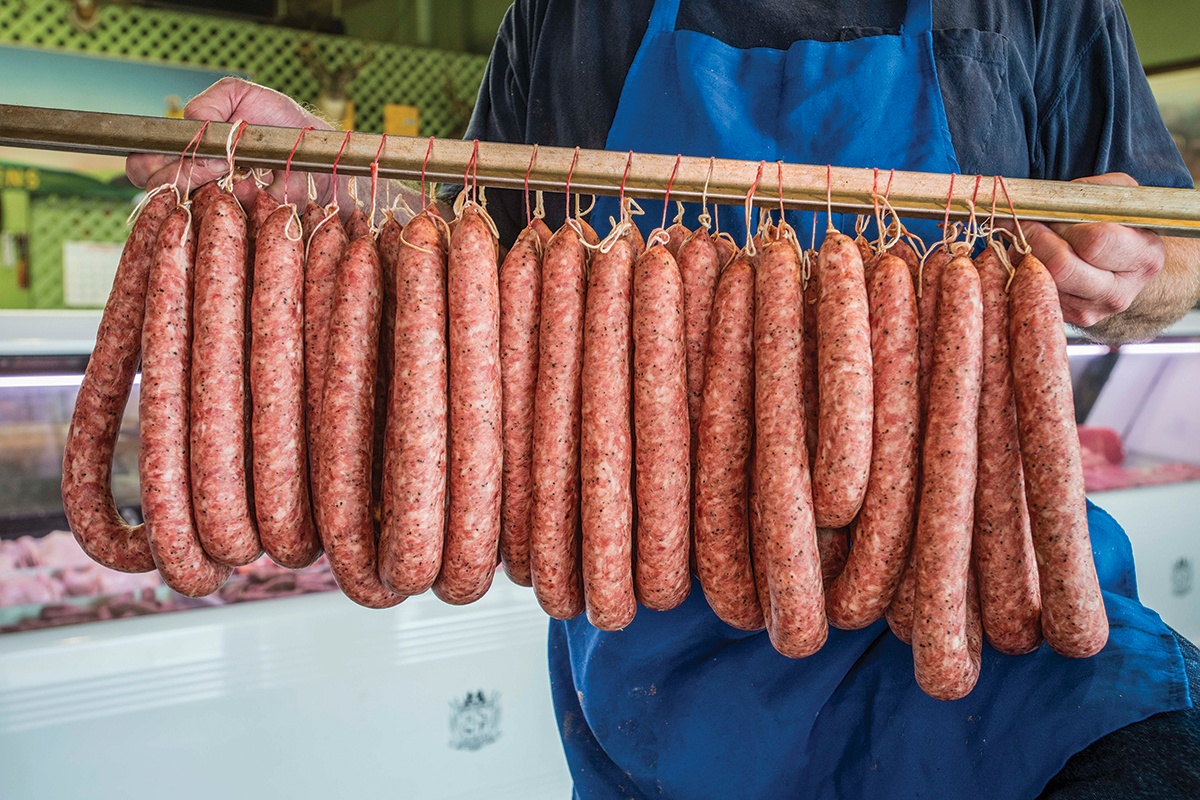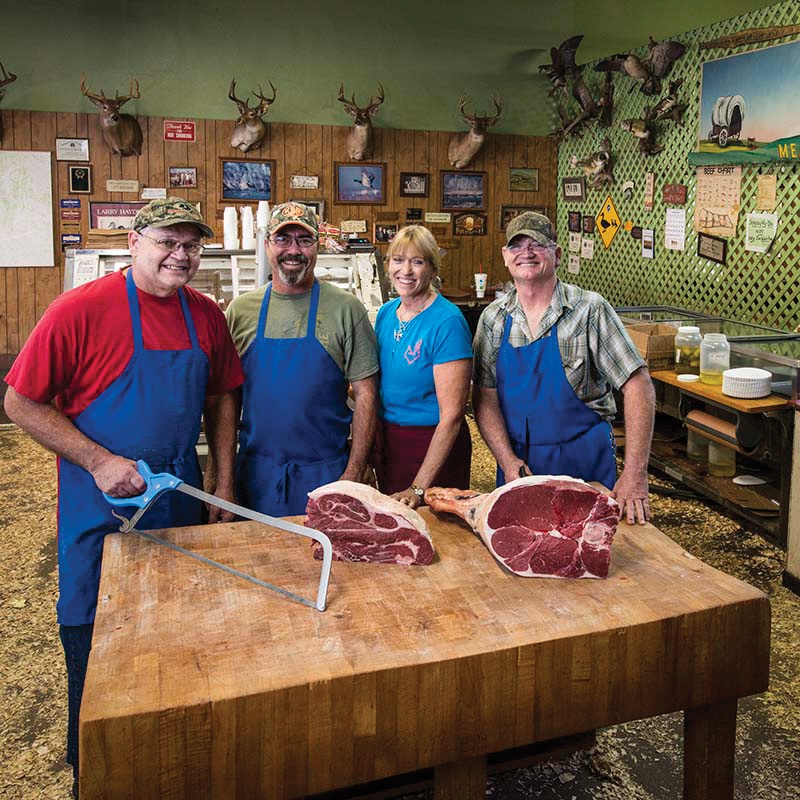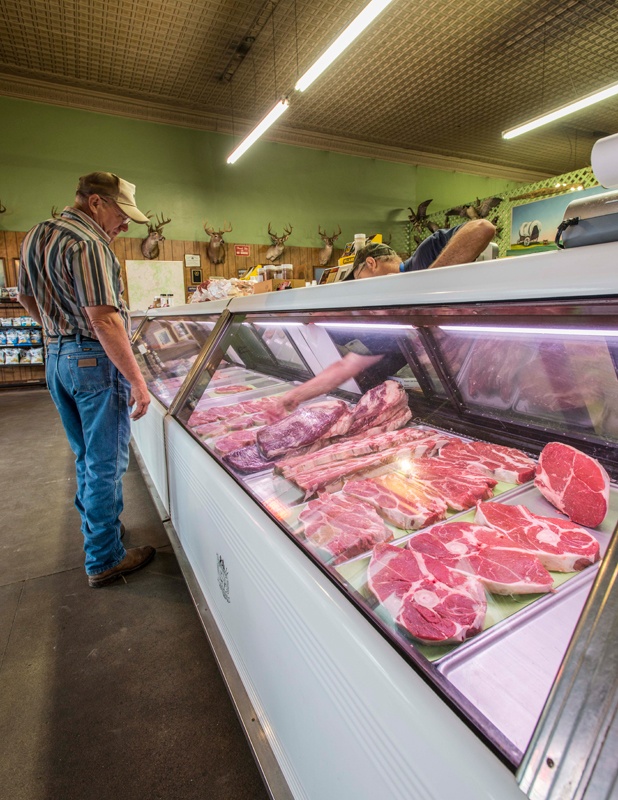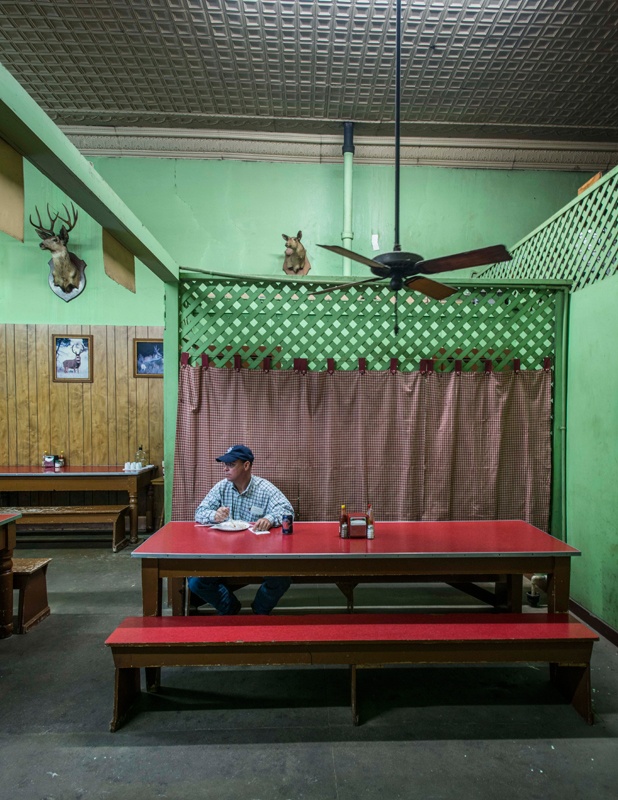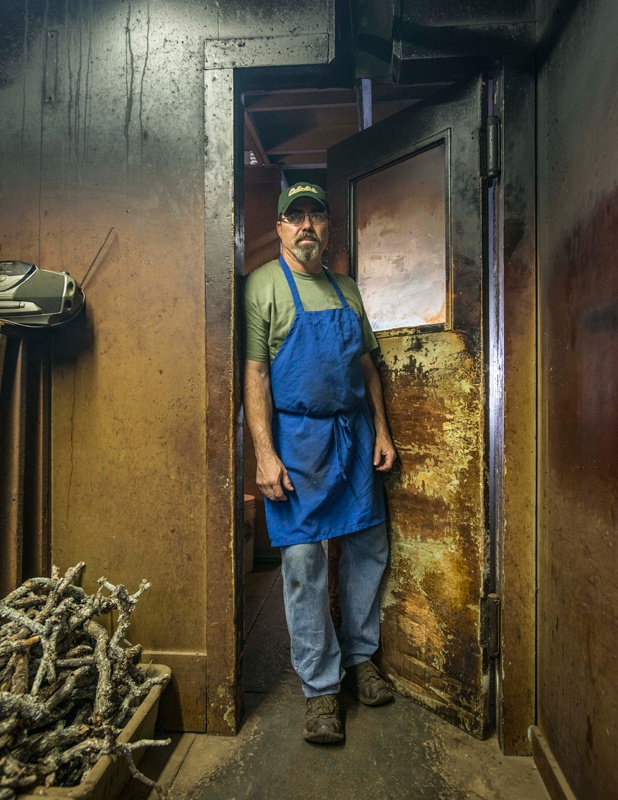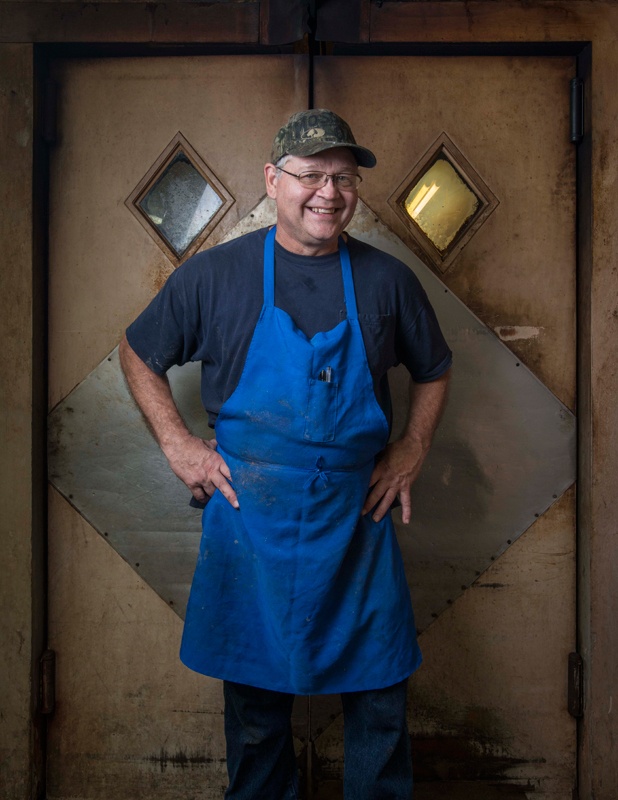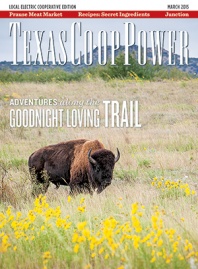In the summer of 1995, when I was in the early stages of my long love affair with the Texas barbecue scene, I lucked into an assignment to photograph small-town barbecue joints throughout Central Texas. The locations on my shot list included Llano, Lockhart, Taylor, Smithville and La Grange. My destination in La Grange was Prause Meat Market, situated on the historic courthouse square. As I walked through the door, I was surprised to see a place unlike any of the other spots I’d visited.
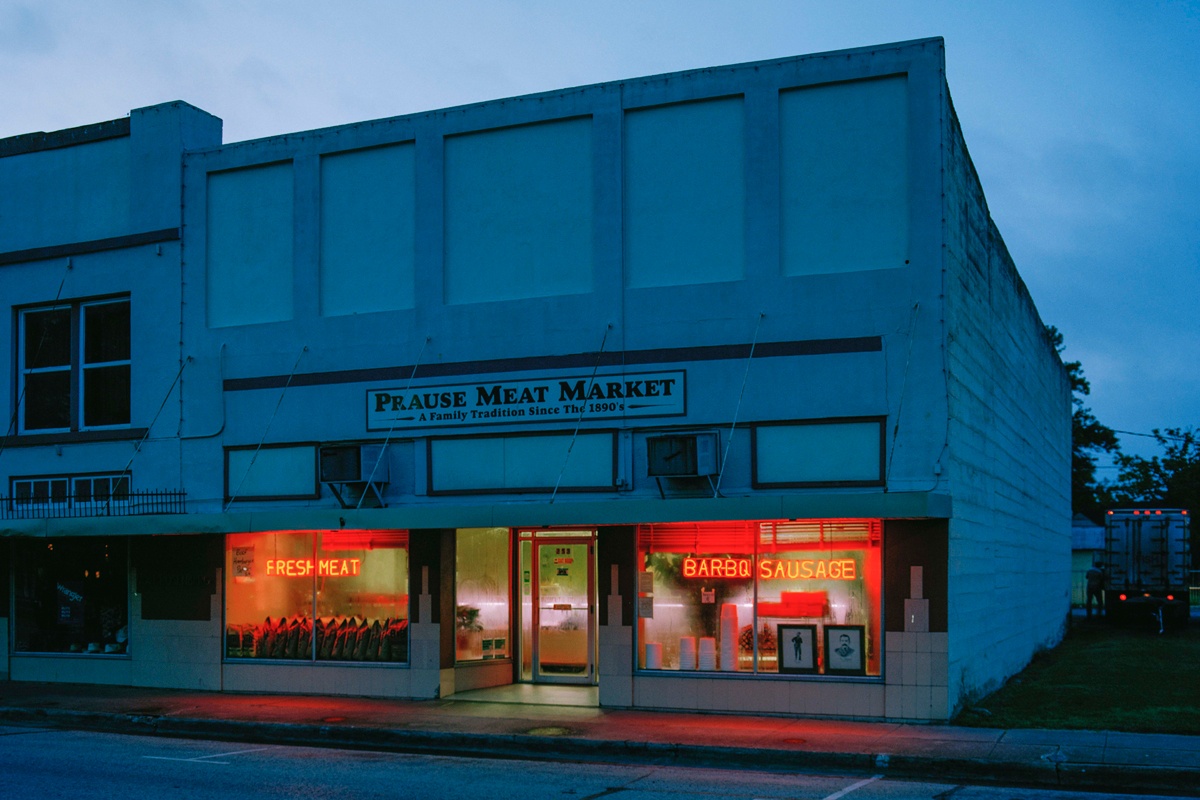
Web Extra: Prause Meat Market, at this location on the Fayette County courthouse square in La Grange since 1953, greets a new day.
Wyatt McSpadden
Prause was then and is now primarily a meat market. Prussian-born Arnold Prause (pronounced PROW-zee) established the family’s first butcher shop in 1904 on the north side of the square. The Prauses’ business eventually outgrew the original location, and they moved it south in 1953 to the current space. The market is owned and operated for now by fourth-generation members of the Prause family.
What I saw in Prause on that first visit nearly 20 years ago took me back to my youth in Amarillo, working in the family grocery store, Central Grocery, the heart of which was our meat market. Prause’s beautiful glass-fronted, refrigerated display cases were filled with carefully prepared cuts of beef and pork. The massive meat block was worn down from years—and tons—of meat trimming. The battered cutlery, the sawdust on the floor and the friendly, helpful folks behind the cases all reminded me of familiar images from my past.
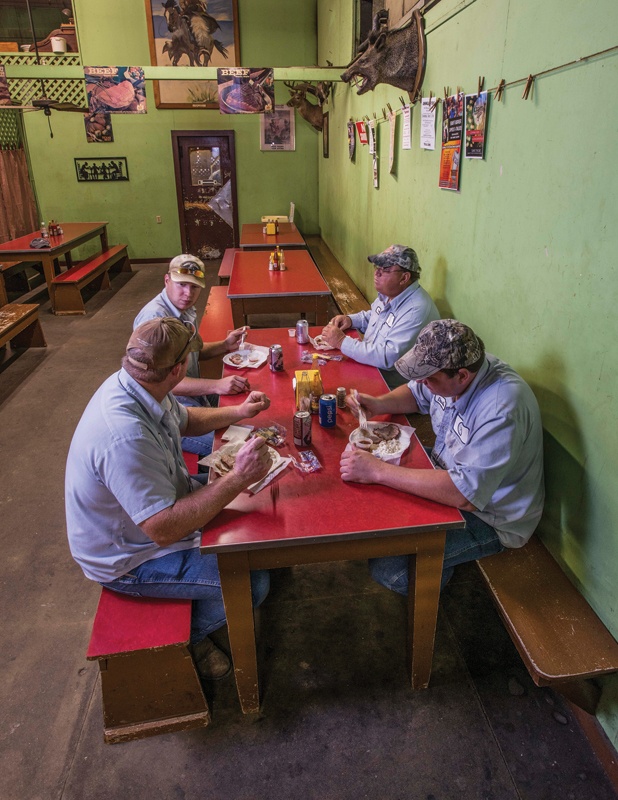
The “eatin’ room” is available for folks who choose to dine in.
Wyatt McSpadden
As my education about and interaction with the Texas barbecue world grew, so did my appreciation of Prause Meat Market. It is a living reminder of the origins of our state’s barbecue traditions. In the early days, when refrigeration was scarce, markets would smoke and sell meats to avoid losses to spoilage. Several present-day barbecue joints still have “market” as part of their names—Kreuz Market in Lockhart, City Market in both Luling and Giddings—but they no longer butcher and sell fresh meats. Years ago, the income from barbecue surpassed the meat market revenue, and the emphasis turned to smoked meats. From those modest beginnings and that simple business model, what we know as Texas-style barbecue was born, and beef brisket is the star of the show. Pit-smoked brisket is the foundation of the Texas barbecue tradition and what separates our barbecue from the pork-centric styles in other parts of the U.S.
On more recent photo excursions to Prause, I’ve paid particular attention to the names of the customers who’ve come to buy fresh meats or sit down to a barbecue lunch: Wanjura, Machicek, Dvorak and Schmidt. They are likely the descendants of early settlers—German, Polish and Czech immigrants who also grew up knowing and patronizing their small-town meat markets.
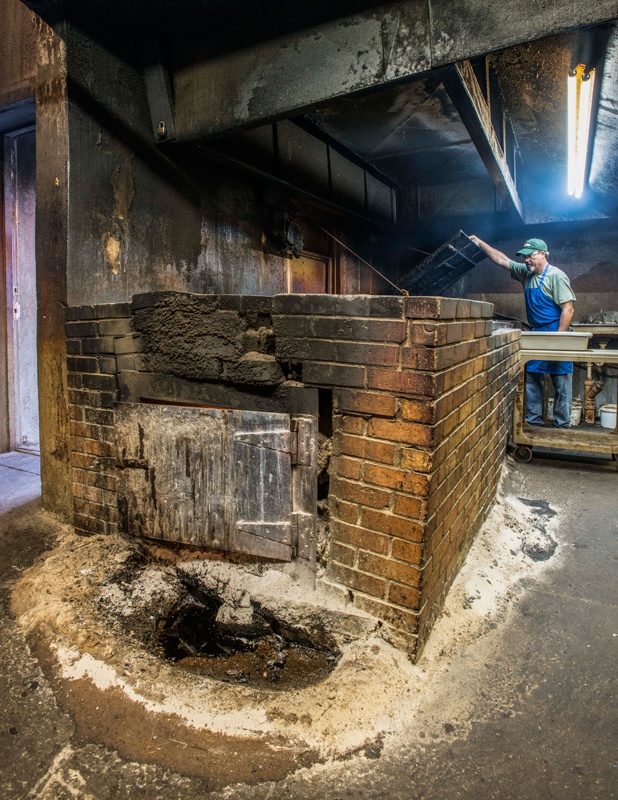
Web Extra: Mark Prause is the pit master.
Wyatt McSpadden
But the Texas barbeque scene has changed dramatically over the past few years. The excitement is in the cities, where energetic, urbanized young professionals have taken on the challenge of producing true pit-smoked barbecue. In Austin, folks happily stand in line for three hours or more at Franklin Barbecue for the pleasure of tasting the amazingly succulent brisket.
Citified barbecue isn’t happening just in Austin. Dallas has it own long lines for barbecue at Pecan Lodge, which recently moved from the farmers market near downtown to new digs in Deep Ellum, a business and entertainment district in East Dallas that is enjoying revitalization. Every major city in the state is experiencing the barbecue boom fueled both by great new joints and the Internet. Google “Texas barbecue,” and you’ll get hundreds of websites, blogs, critics and editorial content on the subject. Prause’s doesn’t have a website, although the young daughter of one of the owners has created a Facebook page for the shop.
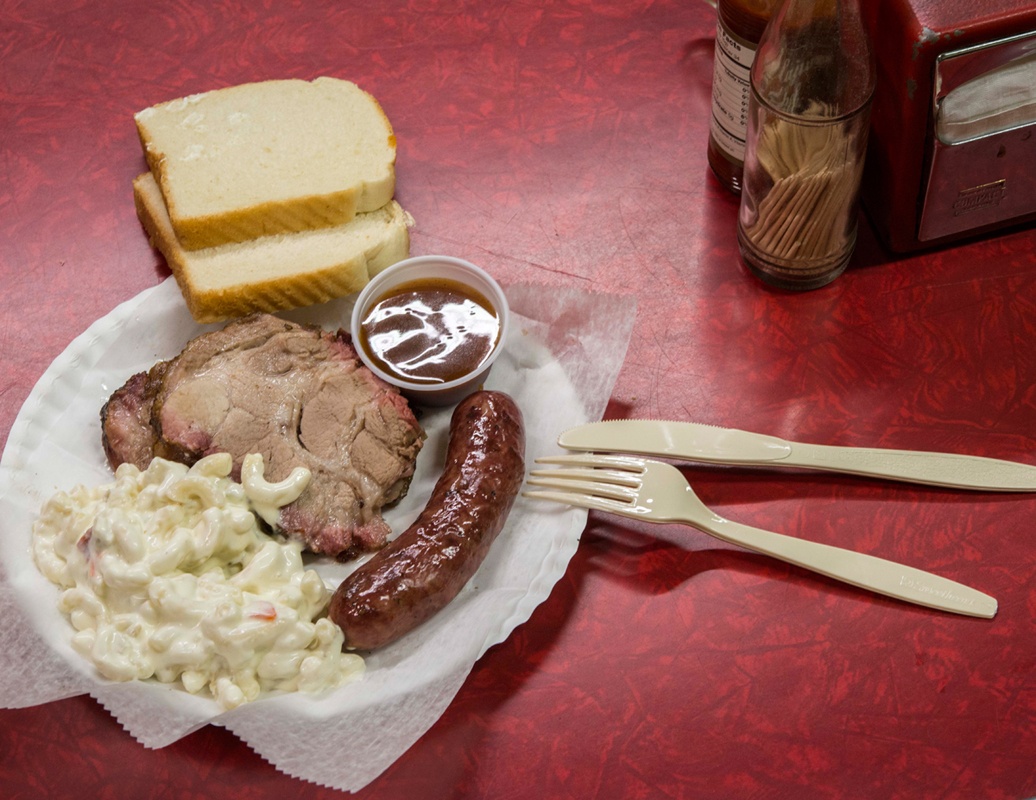
Web Extra: The barbecue at Prause is prepped as it always has been and served on a paper plate with traditional sides.
Wyatt McSpadden
This urban ’cue explosion has produced shock waves, but they haven’t reached Prause. The barbecue here is prepped as it always has been, served on a paper plate with traditional sides at a reasonable price. Prause’s barbecue is affordable for a workingman’s lunch, and the line may have as many as three folks in front of you, or none. Grab lunch in the “eatin’ room,” and you’ll sit next to working people—cattlemen, merchants—and occasionally a few pilgrims from out of town or even out of state.
It’s likely the team of Prauses running the shop today will be the last family members to do so. The newest generation of offspring is turning elsewhere to make a living, so the current owners are planning to sell. Take my advice: Head to Prause Meat Market now, while it’s still a virtual museum for a way of life that’s disappearing faster than wood smoke into the Texas sky.
——————–
Versatile and accomplished photographer Wyatt McSpadden stands on impressive barbecue credentials. Check his website for more proof.
